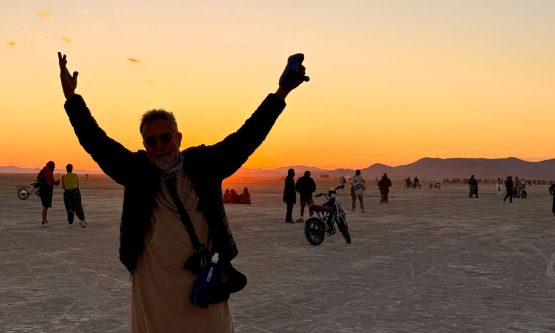
By Rogelio H. Umaña. Guest blogger.
Leaving aside the political discussion and the possibility of whether or not this young senator from Chicago will become the next president of the United States, there are several lessons we can learn from “Obamania” as a brand. Let’s review the most important ones:
Reality-oriented positioning.
A brand ultimately becomes the emotional connection that the consumer feels towards a product or service (Al Ries tells us in his “22 Laws”, Kevin Roberts with his Lovemarks and our own “Relationship Monitor” at DraftFCB). This connection is defined in the now famous and even a bit worn out example of Volvo = Safety, Harley Davidson = Independence, BMW = Status, etc. Barack Obama’s strategists have it very clear: Obama = Change. And even though “Change” is not a really innovative marketing premise, it takes the candidate’s values (charisma, good reputation, warmth, openness) and boosts them into a single word to address the deepest need of the average “gringo”: Leave George Bush’s government behind, in other words… change!
Analyzing the competition, what word encapsulates Hillary? And looking at our customers, what is the word for the products we advertise?
Consistency
From the beginning of his campaign and almost since his first and famous appearance at the 2004 Democratic convention, Barack Obama has projected himself as the “unifying candidate”, “consensus builder” and the one most willing to break the current belligerent bipartisanship and even the policy of non-negotiation with “diabolical” governments (Bush’s famous “Axis of Evil”). In a contest where the mortal sin is to replace political positions by convenience (flip-flopping), Obama has stood firm with his values. And it is also this consistency about his positive attributes that strategically distracts from his most apparent weakness: Lack of experience.
Poorly focused campaigns, capricious creative changes and lack of knowledge of the real values of the products we advertise can easily lead to flip-flopping on our brands’ message. And end up like John Kerry (the most famous of the “flip-floppers”): Forgotten and relegated.
Innovative use of media
Many have called this election “the first election of the 21st century” and while chronologically this may not be the case, it definitely is in the use of new media and voter interaction through it. All the candidates of both parties may now have their websites, but it has been Barack Obama’s campaign that has made the best use of “social networks” to generate support, coordinate teams and obtain financing. In addition to his sober official site, Mr. Obama (or his campaign) has active profiles on Twitter, Youtube and Facebook.
Those who know me know that has been my “mantra” for the past few months. Central America may still be in development, but this is the time to innovate and start putting our brands down that path.
“Engagement.”
What impresses me most about this candidate (especially in the last few weeks) is the incredible creative reaction and emotional inspiration it causes in people. Graphic posters like the one designed by Frank Shepard (from the propagandistic graphic movement Obey, see header), the video of producer will.i.am (from the Black Eyed Peas) and even unofficial “virals” like“Obama Girl” or “Vote Different” (Hillary 1984)” contribute to build an almost iconic image (like “Che” Guevara) that apart from cementing the candidate as a brand, generate traditional media coverage and awaken interest in the so far apathetic new generation of voters. As I read some time ago in a blog: “He’s Apple to Hillary’s Microsoft”.
While there are many factors that contribute to this phenomenon (Internet, youth, race, charisma, political situation), only a well thought out strategy facilitates inspiration and is open to use this “user-generated content” to its advantage.
Which of our brands have this level of “engagement” with the consumer, which ones are so open to “receive” and interact and not just “advertise”?
Rogelio H. Umaña February 12, 2008


